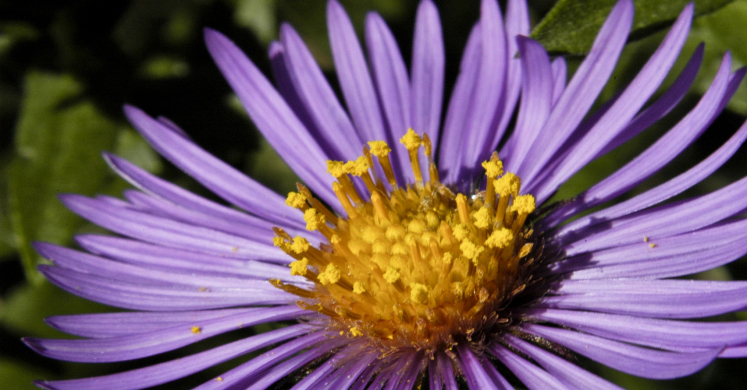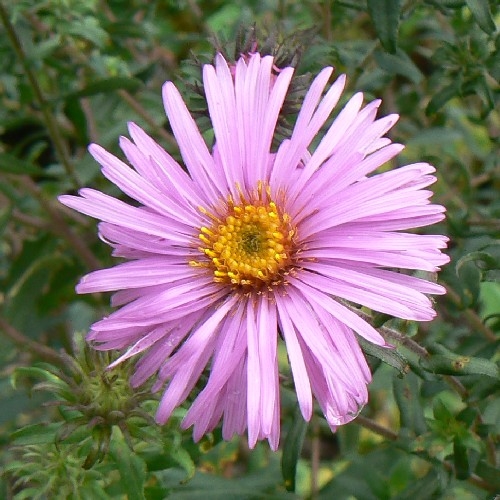Blog

#bioPGH: New England Aster
 A resource of Biophilia: Pittsburgh, #bioPGH is a weekly blog and social media series that aims to encourage both children and adults to reconnect with nature and enjoy what each of our distinctive seasons has to offer.
A resource of Biophilia: Pittsburgh, #bioPGH is a weekly blog and social media series that aims to encourage both children and adults to reconnect with nature and enjoy what each of our distinctive seasons has to offer.
One of my favorite signs of late summer at Phipps is the purple blossom of the New England asters around the Center for Sustainable Landscapes. They usually first start blooming in mid-late August, and by early September, the hillside beds are dotted with amethyst among the seasonal yellows and dark greens — harbingers of the jewel tones of autumn. Let’s learn a bit more about this upcoming flower, shall we?

National Park Service, public domain
New England asters (Symphyotrichum novae-angliae) are members of the Asteraceae family native to eastern North America, from as far south as Georgia to the northernmost reaches of Quebec. They flourish in disturbed lands like along roadsides and in old fields, but they can also be a lovely addition to a native pollinator garden. They need full sun and prefer damp, loamy or even sandy soil; and they can grow to be five-six feet tall.
Most members of Asteraceae, like New England asters, have what’s called a composite flower or a disk flower. Even though an individual daisy or sunflower might look like a single flower, they actually contain hundreds of disk florets and ray florets growing together in what’s called an inflorescence. What makes these “florets” different from simple petals is that they are essentially tiny flowers. As a quick refresher on the important parts of a flower: the stamen of a flower produces pollen and the pistil of a flower receives pollen to produce the next generation of plant seeds. A petal is more like a modified leaf, but a floret has some combination of stamens and pistils. Each of the ray and disk florets may have both a stamen and pistil, they might have either a stamen or pistil, or they might have neither. It depends on the species and the floret’s position within the inflorescence. New England aster ray florets have pistils while they disk florets have both pistils and stamens.
Though I developed a special fondness for New England asters because they are usually the first purple aster to bloom, there are actually four different purple/blue asters in the CSL’s landscape and on the green roof. I checked in with Gary Worthington from our horticulture staff to talk some flowers and how to tell them apart:
“The New England aster (Symphyotrichum novae-angliae) is probably the earliest to bloom, along with the smooth blue aster (Symphyotrichum leave). They are closely followed by the blue wood aster (Symphyotrichum cordifolium), which is most prevalent on the green roof, and the aromatic aster (Symphyotrichum oblongifolium), which is the most common and most visually striking aster in the landscape.”
If you have the chance to visit, the path around the Center for Sustainable Landscapes and lagoon is open to guests, and we would love to see you — and I’m sure you will delight in the assortment of purple asters!
Connecting to the Outdoors Tip: If you would like to bring a little purple aster magic indoors (especially on a rainy afternoon), here is a fun craft tutorial to make some New England aster magic at home!
Continue the Conversation: Share your nature discoveries with our community by posting to Twitter and Instagram with hashtag #bioPGH, and R.S.V.P. to attend our next Biophilia: Pittsburgh meeting.
Resources
Ladybird Johnson Wildflower Center – New England Aster
US Forest Service – New England Aster
Encyclopedia Britannica – Asteraceae
Photo credits: cover and close-up, Frank Mayfield, CC-BY-SA-2.0; Header, Ryan Hodnett CC-BY-SA-4.0

